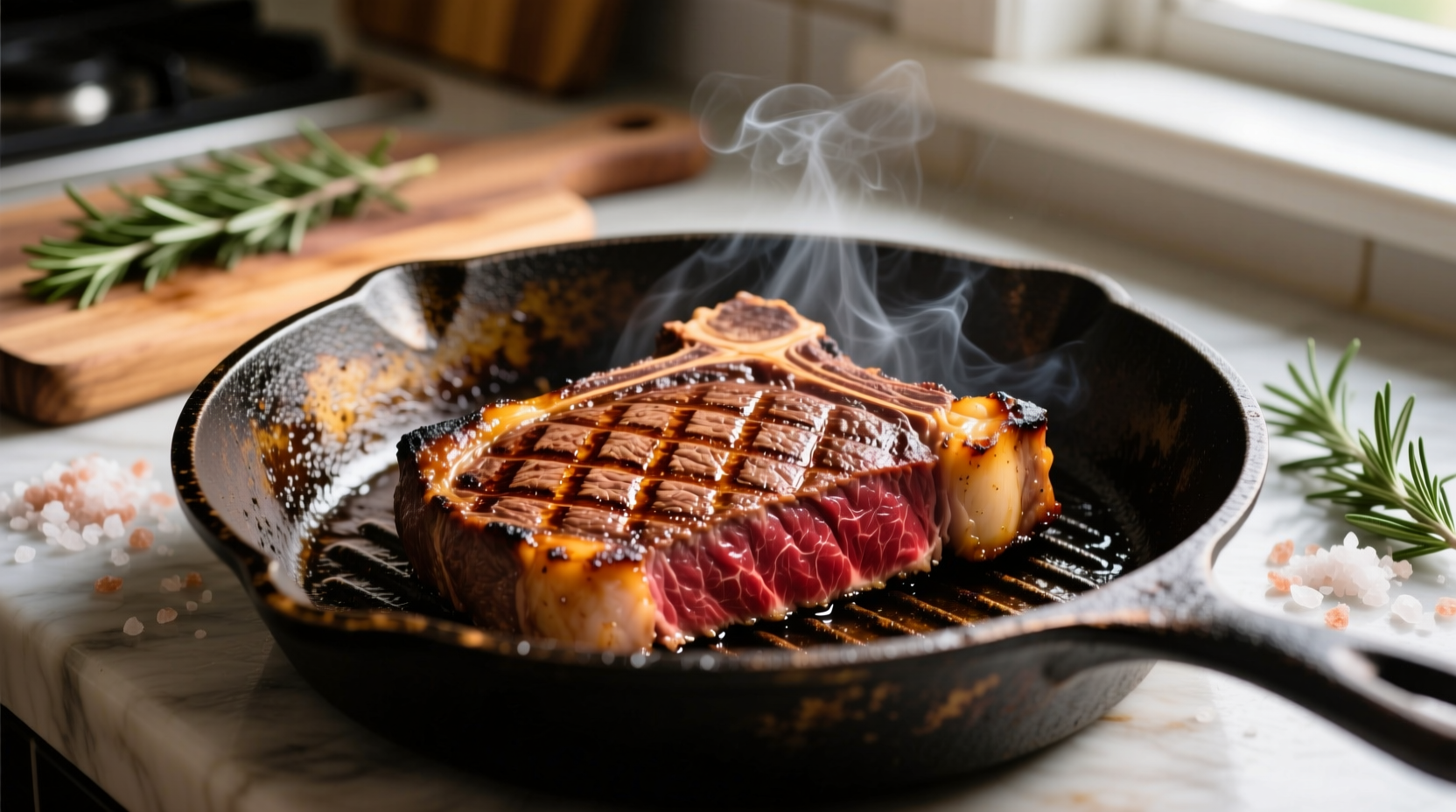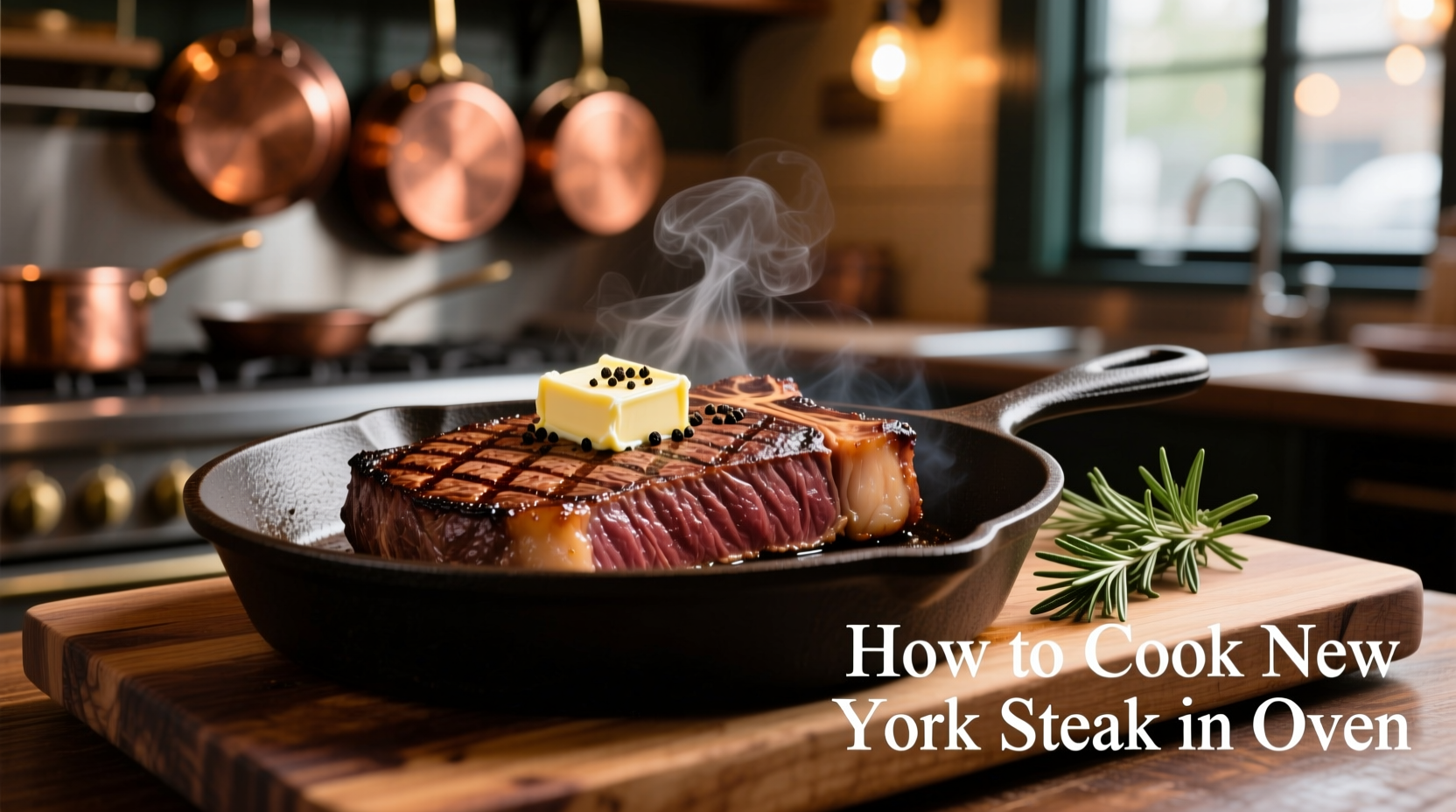The perfect oven-cooked New York steak requires a simple 5-step process: bring steak to room temperature (45-60 min), season generously, sear in oven-safe skillet (2-3 min/side), finish in preheated 400°F oven (6-12 min depending on thickness), then rest 10 minutes before slicing. For medium-rare, aim for 130-135°F internal temperature measured with a meat thermometer.
Want restaurant-quality New York strip steak without firing up the grill? You're in luck. Cooking this premium cut in your oven delivers consistently perfect results with minimal equipment. After decades of testing steak methods in professional kitchens and home ovens, I've perfected a foolproof technique that works whether you're cooking for weeknight dinner or special occasion.
Why Oven Cooking Works Best for New York Steak
New York strip steak (also called Kansas City strip or top loin) has the ideal marbling and thickness for oven cooking. Unlike thinner cuts that overcook easily under broilers, the 1-1.5 inch thickness of NY strip allows for proper sear-to-oven transition. The oven's gentle, even heat ensures perfect edge-to-edge doneness without the gray band that plagues pan-only methods.
| Doneness Level | Internal Temperature | Visual Characteristics | Resting Time |
|---|---|---|---|
| Rare | 120-125°F | Bright red center, cool | 8 minutes |
| Medium-Rare | 130-135°F | Warm red center | 10 minutes |
| Medium | 140-145°F | Pink center | 12 minutes |
| Medium-Well | 150-155°F | Small pink center | 15 minutes |
| Well-Done | 160°F+ | No pink remaining | 20 minutes |
According to USDA Food Safety and Inspection Service guidelines, steaks should reach minimum internal temperatures of 145°F (medium) with 3-minute rest time for safety, though many chefs prefer medium-rare (130-135°F) for optimal texture and flavor in high-quality cuts like New York strip. Always verify temperatures with a calibrated instant-read thermometer placed in the thickest part of the steak.
Equipment You'll Actually Need
Forget complicated gadgets. You only need three essential tools:
- Oven-safe skillet: Cast iron or carbon steel (avoid non-stick which can't handle high sear temperatures)
- Instant-read thermometer: Thermapen or similar (crucial for precision)
- Metal spatula: For secure flipping without piercing the meat
Pro tip: Preheat your oven to 400°F at least 20 minutes before cooking. This ensures consistent temperature from the moment the steak enters the oven.
Step-by-Step Cooking Process
1. Proper Steak Preparation (Critical Step!)
Remove steak from refrigerator 45-60 minutes before cooking. This brings it to proper room temperature, preventing the common mistake of a cold center with overcooked exterior. Pat completely dry with paper towels - moisture is the enemy of proper searing. Season generously with coarse kosher salt (1 tsp per pound) and freshly ground black pepper on all sides.
2. Perfect Searing Technique
Heat your skillet over medium-high heat for 5 minutes until smoking hot. Add 1-2 tablespoons of high smoke-point oil (avocado or grapeseed). Place steak in skillet away from you to avoid oil splatter. Sear undisturbed for 2-3 minutes until deep brown crust forms. Flip and sear the other side for another 2-3 minutes. For thicker cuts, sear the edges by holding the steak vertically with tongs.

3. Oven Finishing for Perfect Doneness
Immediately transfer the skillet to your preheated 400°F oven. Cooking time varies based on thickness and desired doneness:
- 1-inch steak: 6-8 minutes for medium-rare
- 1.5-inch steak: 9-12 minutes for medium-rare
- 2-inch steak: 12-15 minutes for medium-rare
Check temperature 2-3 minutes before estimated finish time. Remember: temperature will rise 5-10°F during resting. For medium-rare, remove steak at 125°F.
4. The Non-Negotiable Resting Period
Transfer steak to a cutting board or warm plate. Tent loosely with foil and rest for 10 minutes (5 minutes per inch of thickness). This allows juices to redistribute throughout the meat. Cutting too soon releases precious juices onto your plate instead of staying in the steak.
Troubleshooting Common Oven Steak Problems
Issue: Uneven Cooking
Solution: Rotate the skillet 180 degrees halfway through oven time. Ovens often have hot spots that cause uneven cooking. Position the steak with its thicker end toward the back of the oven where it's typically hotter.
Issue: Overcooked Exterior, Raw Center
Solution: This happens when the skillet isn't hot enough for proper searing. Next time, heat your skillet for 5 full minutes until smoking before adding oil. The oil should shimmer immediately upon contact.
Issue: Steak Sticking to Pan
Solution: Pat the steak drier before seasoning, and don't move it during the first 2 minutes of searing. Properly seared meat will naturally release from the pan when ready to flip.
Serving Your Perfect New York Steak
Slice against the grain at a 45-degree angle for maximum tenderness. For classic pairing, serve with roasted garlic butter (2 tbsp softened butter, 1 minced garlic clove, 1 tsp chopped parsley) melted over the top. Simple sides like roasted asparagus or mashed potatoes let the steak shine.
Leftover steak? Store in airtight container in refrigerator for up to 3 days. Reheat gently in 250°F oven until internal temperature reaches 110°F, about 10-15 minutes, to maintain juiciness.
FAQ: Oven-Cooked New York Steak
Can I cook frozen New York steak in the oven?
While possible, thawing is strongly recommended for even cooking. Frozen steak requires significantly longer cooking time and often develops a gray band between the seared exterior and rare center.
Should I add butter during cooking?
Adding butter during the oven phase creates delicious basting opportunities but increases smoke risk. If using, add 2 tablespoons after searing and tilt pan to spoon over steak during oven time.
What's the ideal oven temperature for New York steak?
400°F provides the perfect balance between gentle cooking and maintaining the sear. Higher temperatures (450°F+) risk overcooking the exterior before the center reaches proper temperature.
Can I use the broiler instead of oven?
The broiler works but requires constant attention and often creates uneven results. The conventional oven method delivers more consistent edge-to-edge doneness, especially for thicker cuts.











 浙公网安备
33010002000092号
浙公网安备
33010002000092号 浙B2-20120091-4
浙B2-20120091-4